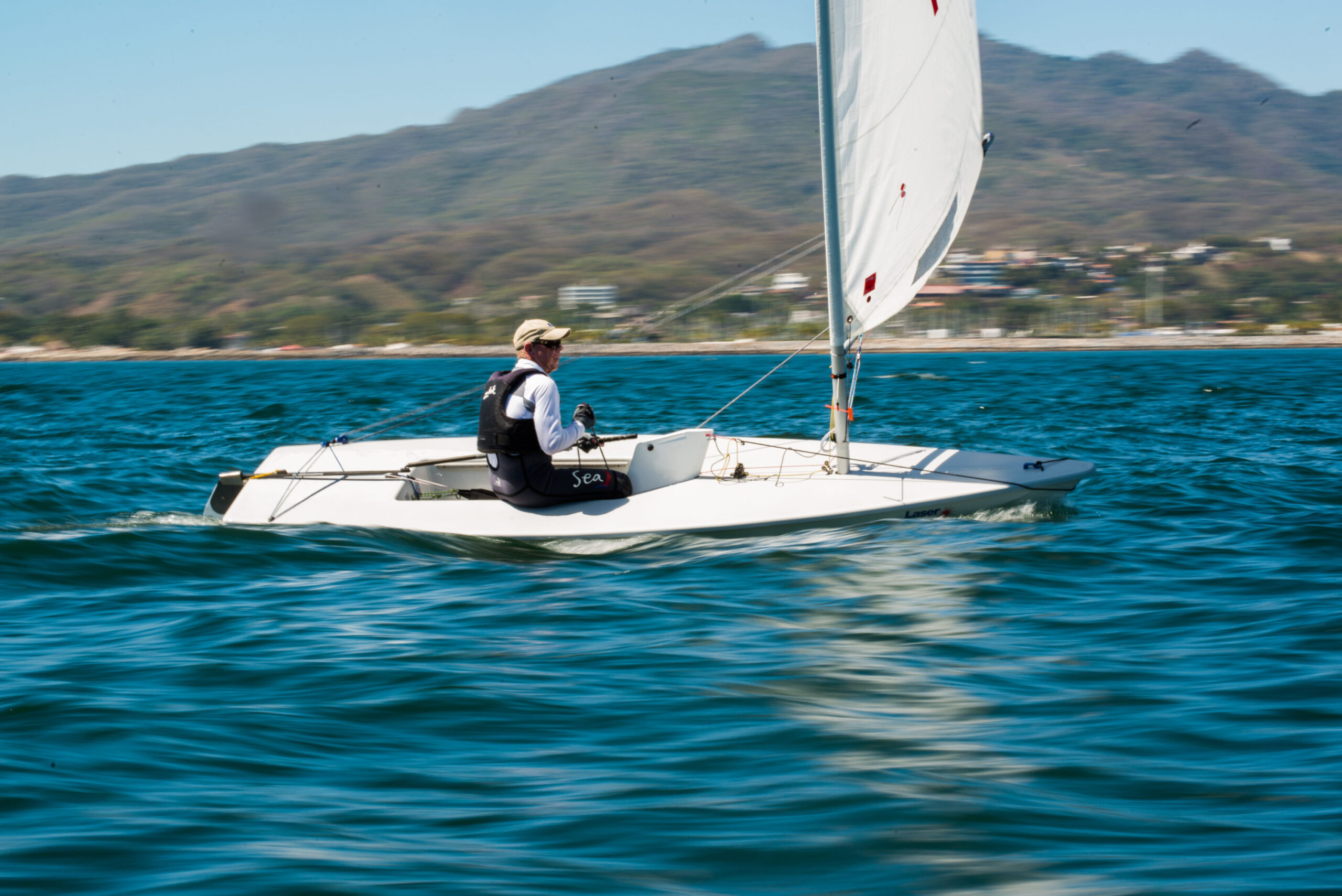
There is no one skill or technique used to consistently sail through the fleet, but rather a combination of practices, which allow more dynamic sailors to adjust and accelerate. As each sailor develops in their approach to downwind racing, a ladder of learning must be climbed, which starts with pressing and releasing.
Pressing is applying weight to the leeward side of the boat with your knee inside the cockpit or on the grab rail and/or tiller-hand on the gunwale. When downwind sailing, especially closer by the lee the opposing forces on your sail and boards reverse and the boat tips to windward. Using your weight to stabilize the boat over the leeward side balances the effects and allows the boat to sail straight and fast.
Using this to our advantage:
In lighter to medium conditions, you generally want to sail downwind with a setup that induces lee helm, which is when the boat wants to bear away. The biggest contributors for lee helm are sheeting out, loose vang and windward heel. If you considered taking the rudder out of the picture in this setup, your boat would certainly try to bear away (lee helm). By simply pressing and holding your weight to the leeward side you can stop the boat from bearing away, limiting the amount of lee helm before an inevitable gybe takes place. Precisely in that order of inducing lee helm, then pressing it out before gybe, you can create a big increase in speed, balance and allow for a flatter planning surface in your boat.
Learn this in our downwind clinics
Transition:
I have just described to you one transition, which we call a ‘downturn’. The downturn is the simplest and most basic way of accelerating, catching waves and increasing VMG. What you do next is more important, and that is setting yourself up for another transition. Pressing will not only stop your boat from bearing away, but it is also used for heading up. How much you press, and where you press dictates how much the boat will head up, and what your next transition might be.
Let's take a look at the rudder:
With lee helm, the boat is bearing away to the lee, behind it the rudder follows, which means your tiller is to windward. When you press and hold your weight into the leeward side of the boat, it stops turning, and the tiller/rudder return to the centerline of the boat, driving straight. At this point, you are locked in, but the boat still has 2 out of the 3 characteristics of lee-helm (sheet out and lose vang) so it won’t head up any further. Releasing is the next step and the biggest struggle to do without forcing your tiller. With your weight spread out across the boat balancing, you need to take a leap of faith, and press harder into the leeward side with your tiller-hand, foot, and knee pushing it down to leeward past flat. What we are trying to achieve is to break the lee helm completely and head the boat up to DDW (dead downwind sailing) or slightly higher. The actual ‘releasing’ effect is when your tiller snaps over to the leeward side as a reaction to the boat completely losing lee-helm.
When you start to catch waves with perfectly timed downturns and releases, your speed is always sufficient enough to give you more options.
90% of sailors I’ve worked with, even very elite athletes still struggle with releasing properly. Between the timing, the amount of weight needed, and the use of forcing the tiller too early to head up, there is a huge amount of speed and planning surface that is not being achieved. I often see boats SO close to releasing the lee helm, and just as it’s about to break, the sailor pushes the tiller to leeward forcing the boat to head up for a wave of directional reason but never breaking the lee helm. It’s unfortunate and breaks my soul when all that is required is pushing an extra 15lbs to leeward, and letting the boat release onto the wave and letting the rudder/tiller follow to leeward.
The difference is outstanding to the way the boat looks and reacts. Not only that, but it proves a bit of anticipation is required to get your timing right. When you start to catch waves with perfectly timed downturns and releases, your speed is always sufficient enough to give you more options. Although this is just the beginning of downwind sailing speed, it is the absolute concrete technique for achieving the best speed off the wind.